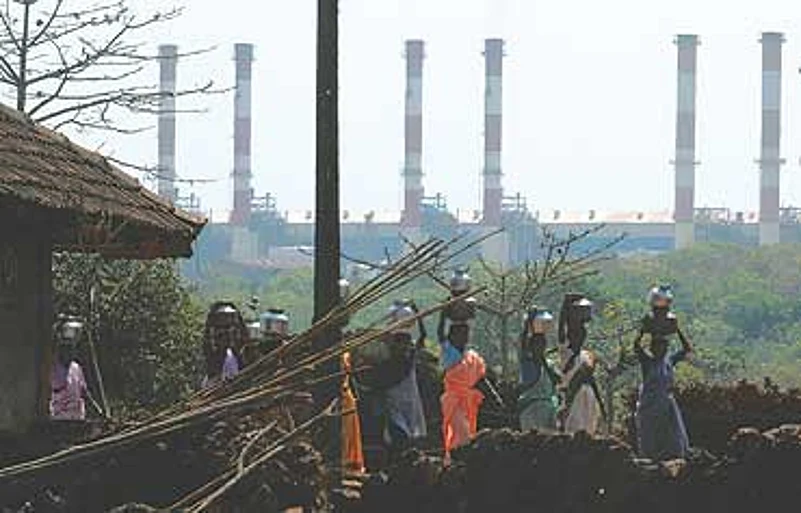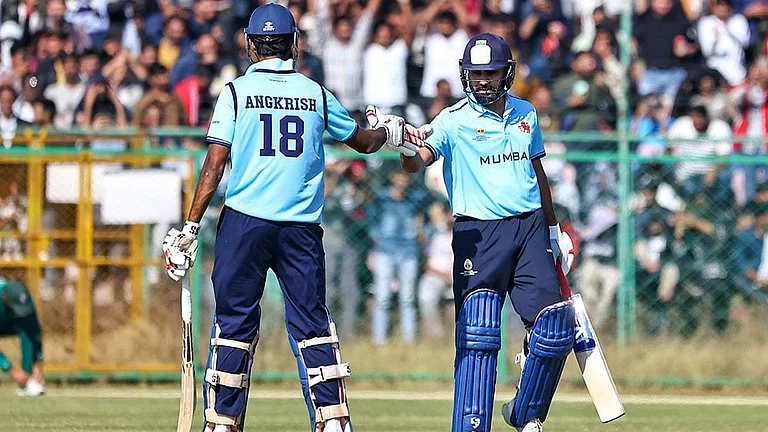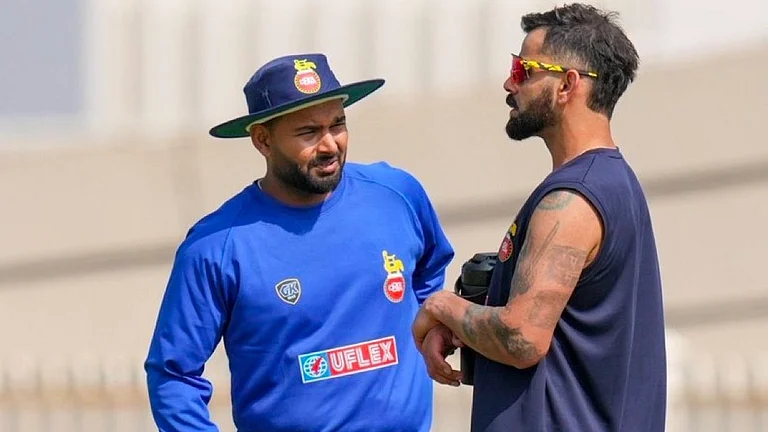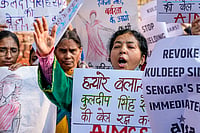Driving into Guhagar (Maharashtra), in the shadows of India’s largest power unit, on a Monday is like entering a ghost town. Everything is shut because it is the weekly power-cut day. On other days, there’s load shedding for nearly six hours. Still, in many other ways, Guhagar is returning to life.For, it is home to the Dabhol power plant, which restarted power production this month after staying shut for five years. Here, everyone has a Dabhol story—some because they worked there earlier, others as they benefited obliquely from the project, and many who opposed it vehemently.
During the 1990s, the locals clashed consistently. It turned out to be a tussle between those whose livelihoods (growing mangoes and fishing) suffered and those who managed high-paying jobs with anMNC owner, the now-bankrupt US-based Enron, that was accused of paying kickbacks and jacking up electricity prices. Years later, the classic fight between lost livelihoods and new opportunities is still on—the old workers are demanding that they be reemployed along with others seeking fresh jobs.
In fact, the history of Dabhol and Enron has symptomised a kind of a socio-economic battle between tradition and modernity, a never-ending transition from the old socialist and corrupt India to a semi-capitalist and transparent one. In 1992, when the project was mooted, it represented the new age of reforms, where even the poor were to benefit. Subsequently, it got deluged with allegations of corruption, political favouritism and environmental negligence. Once Enron quit India in 2001, it signalled the realisation that reforms had probably failed to deliver the right results at both the macro and the micro levels. More importantly, it left the local economy in tatters.
Last year, when it became apparent that the unit will start producing power again, there was hope and excitement in the air. Over 3,500 locals signed up for jobs. Since the Ratnagiri Gas and Power Private Limited (rgppl), a tie-up between the state-owned gail and ntpc, took over the plant last December, they kept pushing against the plant’s rusting barricades every morning in the anticipation that they would earn ‘mnc’ salaries. It seemed that the 60 long months of woes were over.
Iklas Maiyar looks every bit like the kind of guy who’s forever searching for a fortune. He worked for Enron earlier and when Dabhol shut shop, he moved to Mumbai, where he worked as an estate agent. Last December, when he heard the good news, he returned to get his earlier job back. Unfortunately, since then, he just hangs around every day hoping that someone will sign him up on a daily-wage basis. He gets work for a couple of days a week and, on other days, he defeatedly heads back home.
Many others like Maiyar have realised that jobs in the plant are now hard to come by. The reason: after kicking Enron out of the country, the Central government took charge and the state regime is not involved any more in giving out the contracts. So, it’s the outsiders, or "bhaiyyas" (the local term for north Indian workers), who are in demand. "There are hardly any permanent jobs," cribs Ismail Malukdar, whose fortunes fluctuated with that of the unit. Earlier, Malukdar worked with Enron and became a fisherman when the plant closed down; now he’s back looking for his old job.
The old Enron hands keep waving their old ID cards to no use. "We worked here in the face of all opposition. We treated it as our own company but now we are not getting jobs while outsiders are," says an angry Bharat Bhuvad of the Dabhol Veej Prakalp Kamgar Samiti, a union of ex-Enron workers demanding jobs. In fact, Bhuvad has a list of 190 such employees, many of whom sold their land for the power project thinking they would be happier working at the plant. The anger is understandable. As Baba Bhalekar of Veldoor, who was part of the now-defunct Enron Virudh Sangharsh Samiti, puts it: "There is only one real source of livelihood here."
It’s not just the old workers who’re feeling disillusioned. Even the NGOs and the locals who had opposed Enron on environmental grounds are disheartened. Dabhol, for all its good intentions, had ruined the traditional livelihoods because of pollution in the 1990s. At Snehal Vaidya’s Anjanvel home, nestled in her mango orchard, bright red oil from the Enron factory used to pollute the stream whose waters were used for domestic and irrigation purposes. In other orchards that grew the famous Alphonso mangoes, tree leaves used to be topped with a powdery white soot from the old Dabhol chimneys. During those years, earnings from mango orchards fell to a third.
Warm and, what activists then called, polluted water killed fish, and the dead fish used to float in the sea. For years, when the factory was producing power earlier, fishing had become impossible and no compensation was paid to the fishermen to make good their losses. In Dabhol’s new avatar, things may become worse. "Now both the phases of the project will be in operation and, therefore, the danger of environmental damage is more, particularly since it’s using naphtha as the fuel," claims Bhalekar. Enron had only commissioned its first phase and had planned to use a much cleanerLNG as fuel.

At a commercial level, too, the project seems to be in a mess. One of the main oppositions against it was that Enron was charging Rs 5.58 per unit of power, which was very expensive compared to other plants that were selling it at Rs 2. And this was when Maharashtra was a power-surplus state. Today, when the state is facing an acute power shortage,RGPPL is charging Rs 4.25 per unit, which is still considered high. In the past few years, several critics had maintained that restarting Dabhol may prove to be more expensive than it was during the Enron days.
But the state’s power bureaucrats believe that Dabhol will prove to be a blessing in disguise, both in the short and the long term.Sanjay Bhatia, MD, Maharashtra Distribution Company, feels that the plant will ensure that there’s no unscheduled load shedding in the state this summer. "The regular load shedding will continue," he adds. These days, a 12-hour load shedding per day is common, particularly in rural Maharashtra and the current power shortage is estimated at 4,500 MW. rgppl, the new owner, will be able to hike its generation from the existing 140 MW to 700 MW.
RGPPL’s CEO, Chandan Roy, is elated that he could restart a plant that was shut for five years, in five months. "This is, perhaps, the first time that machinery lying unutilised for five years has been reactivated," he said the day the plant went online again. He still has a few problems. The naphtha inventory will only last the summer. Design hurdles have delayed output targets. But Roy hopes to overcome them soon. He’s being supported by those who are happy that Dabhol is generating electricity again. One is Archis Taswalkar, a teenage tourist guide, who says that "when the plant’s lights came on after Diwali, we were so excited".
Taswalkar is in a minority as most locals are critical of the project. It’s not that they want the plant to close down again, as was the case with a majority of them during the Enron days. It’s just that they feel more jobs should have come to them. They are angry that no one has paid the legitimate taxes to the three villages in the past five years. EvenRGPPL has refused to pay the past taxes. In spite of court orders to start a training institute, hospital and a water supply plant in the area, nothing has happened.
Die-hard Enron critics like Vaidya hope that things will change for the better this time. "Maybe if the villages got those taxes and those jobs, we would not need to take a loan to build a house. Others feel that way too," she says. Yusuf Maniar looks over the Dabhol plant from an unusual vantage point, a medieval Maratha fort—Gopal Gadh—which overlooks the plant, village and the sea. He purchased it years ago and as he looks at the view, he reminisces, "What did we get out of the protest? We took up the big issues but the villagers are in the same, if not worse, situation."
by Saumya Roy in Ratnagiri district


























